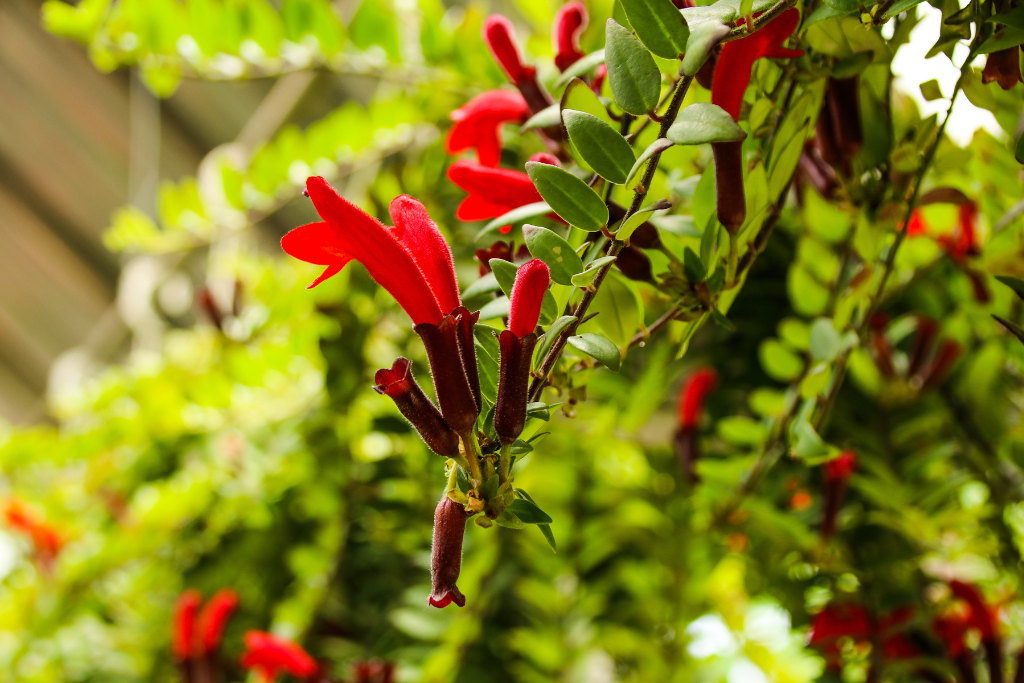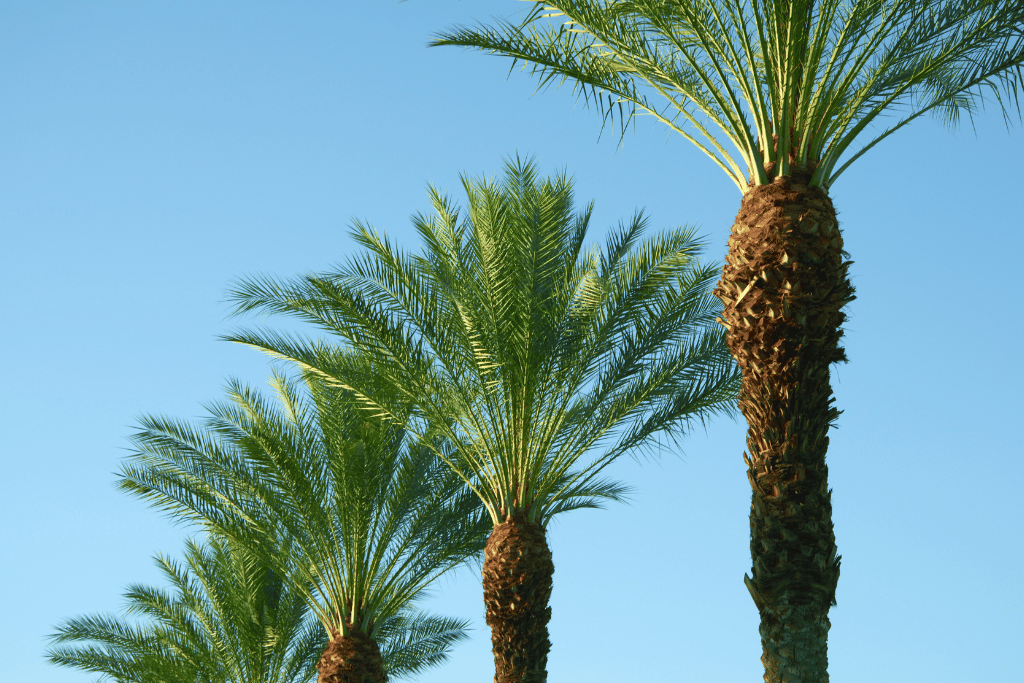
Recognizing a palm tree is an easy task. But spotting one and knowing whether it’s a King Palm or Queen Palm takes more skill. These magnificent greens originate from the subtropics and are commonly associated with lively boulevards and serene beaches.
Both plants make exceptional landscape trees and add a tropical touch to any outdoor space. However, before you invest in this majestic beauty, it’s important to get familiar with the differences between King Palm and Queen Palm. This way, you can make an informed decision and won’t be surprised when the fully grown tree doesn’t look exactly how you imagined. So, let’s explore their individual characteristics!
Kings Palm Essential Facts

King Palm or Archontophoenix alexandrae is native to subtropical rainforests in Australia.
This majestic plant can reach up to 60-90 feet (approximately 20-30 meters) in height and has a slender, grey-ish trunk with a crown of glossy, dark-green leaves.
This versatile and adaptable giant thrives in a wide range of soil types and climates, making it a popular choice for landscaping in especially tropical and subtropical regions. It is resistant to most pests and diseases. Its elegant appearance and fragrant flowers make it a beloved ornamental pick in gardens, parks, and even urban settings, where they are commonly seen lining boulevards and avenues.
What About The Queen Palm?
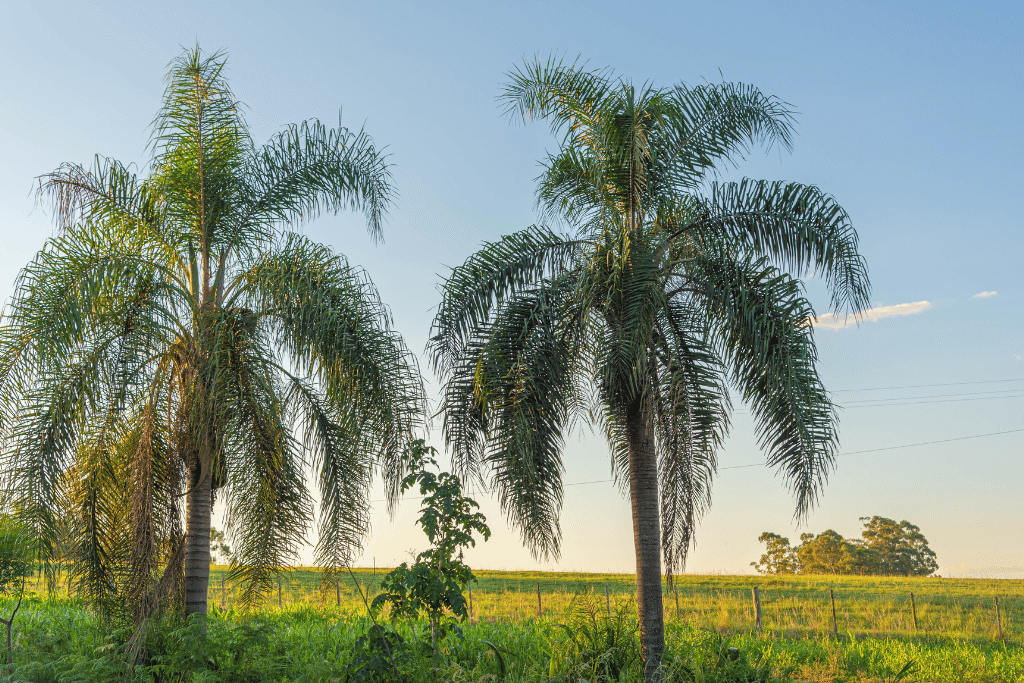
The Queen Palm goes by the scientific name Syagrus romanzoffiana and is known as a tall and graceful tree that stems from South America. Just like its noble mate, it belongs to the family Arecaceae. It grows up to 50 feet (about 15 meters) tall with a spread of up to 25 feet (approximately 8 meters). The tree has a single slender trunk with smooth gray bark and large feathery fronds that can reach up to 10 feet (3 meters) in length.
It is often spotted as an outdoor plant in countries such as Brazil, Argentina, and Paraguay. Since it doesn’t mind adjusting to moderate light conditions if necessary, it makes an excellent resident for indoor planters, homes, and offices as well.
King Palm Tree vs. Queen Palm Tree: Main Differences

As you can see, both plants have several things in common regarding physical appearance and structure. However, there are a number of factors that clearly set them apart. So, in case you’ve only dared to keep palm -lookalikes at home so far and would like to crank it up a notch, look for these differentiating elements in your next graceful monarchs:
1. Trunks
One of the most prominent distinctive elements between King Palms and Queen Palms is the look of their trunk. The former one has a tall, straight, and delicate trunk with a smooth surface that is an off grey color. As the tree grows, the trunk becomes thicker and more textured, creating a stunning visual display that is both sturdy and majestic. In comparison, the latter giant has a slightly thinner body with a more pronounced bulge near the base. The surface of it is light brown, and it is marked with rings that indicate the tree’s age.
2. Fronds
The King Palm tree has an exquisite crown consisting of 8 to 10 pinnate fronds that are adorned with 60 to 80 leaflets on each side of the midrib. Typically, the entire canopy has a lateral twist, and the pinnae usually grow up to 30 inches (0.5 meters) long. The underside of the leaves has a silvery-grey appearance, while the upper part is dark green. At the base of each frond is a huge light green crown shaft, standing up to three feet tall.
Queen Palm trees boast feathery fronds that are a dark shade of green and come in two rows of leaflets. Most often, a single tree typically develops more than 15 fronds, creating a full and round crown.
3. Flowers and Fruits
Some of the most spectacular differentiators between King Palms and Queen Palms are their flowers and fruits. The King Palm produces pink flowers in the middle of summer, attracting bees and other pollinators. As the flowers fade, they give way to bright orange or red berries that are a favorite of birds. These fruits, which are edible for humans but not commonly consumed, contain a single large seed and have a sweet flavor.

Queen Palm trees, in contrast, develop small, white to yellowish flowers that grow in clusters near the base of the leaves. After pollination, these inflorescences give way to groupings of small, yellow to orange fruits that contain only one seed. Even though consumable, they are not particularly tasty and are often used as food for birds and other wildlife.
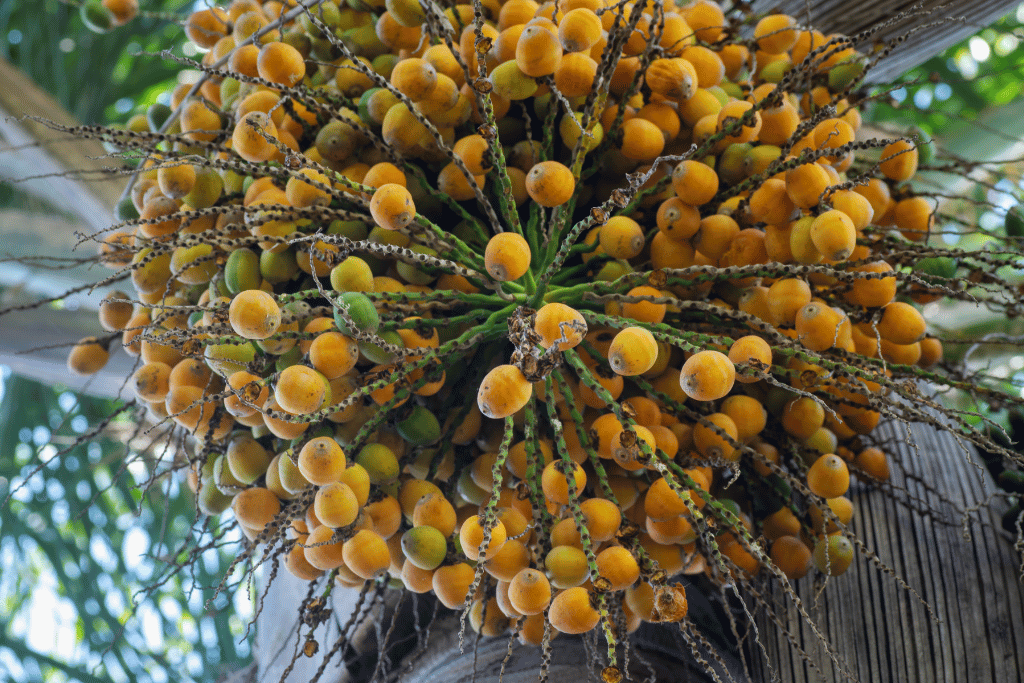
4. Thriving conditions
Both greens prefer well-draining soils that are rich in organic matter. However, King Palms are more tolerant of alkaline soils, while Queen Palms have a slightly acidic taste.
It’s true that this royal couple feels the best in warm and humid climates but still can withstand temperatures as low as 20 degrees Fahrenheit (about -6 Celsius). As for humidity tolerance, the Queen Palm has a wider dry air threshold.
King Palms prefer full sun exposure but endure partial shade too, while Queen Palms thrive in plenty of direct sunlight and have lower resilience towards shady spots. However, these sturdy trees still adapt quite easily to different light conditions.
Regular watering is key to maintaining healthy greenery, and Arecaceae are not exempt from this. A well-sustained watering schedule is required especially during the hot and dry months. Even though King Palms survive on less water, don’t forget to provide them with a drink at least twice a week to maintain healthy growth.
King Palm Tree vs. Queen Palm Tree: Similar Features
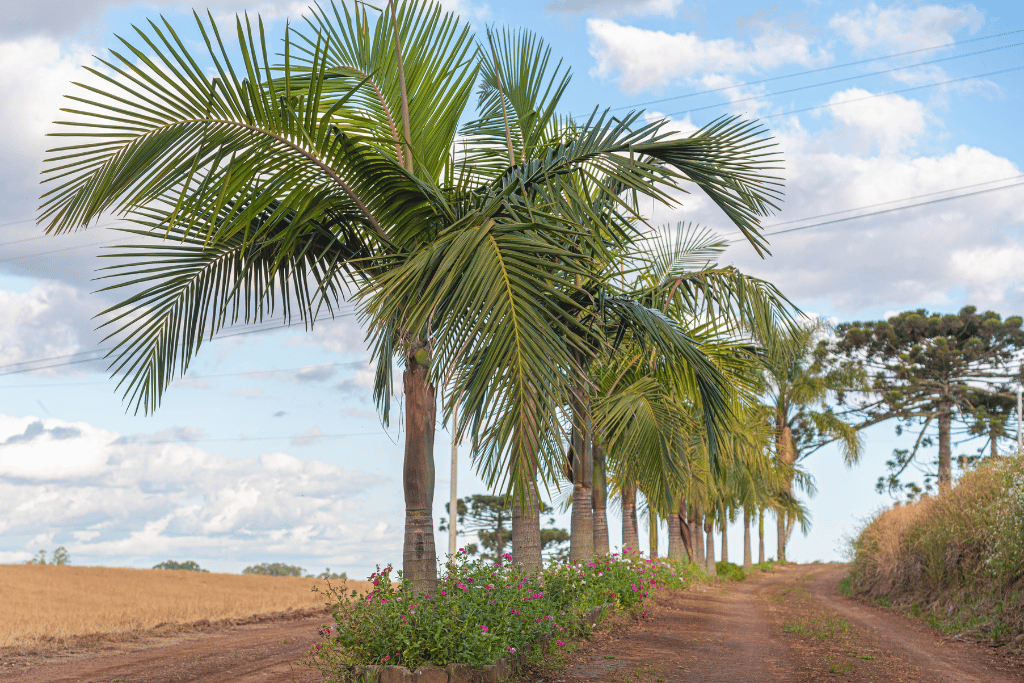
Now that you know the ins and outs of what factors make these monarchical beauties different, let’s cover the main features they share. Regarding appearances, both plants have long, lean trunks topped with lush crowns. However, King Palms have a slightly thicker trunk and larger fronds than Queen Palms.
Moreover, the royal couple enhances the visual pleasantness both in urban and more natural surroundings. While they generally thrive in warm and humid climates and prefer porous soil along with regular watering, both palms endure cold temperatures for short periods.
Conclusion
Whether you’re looking to add a touch of exotic vibe to your outdoor space or searching for the perfect indoor plant, you cannot go wrong with the King Palm or Queen Palm. By understanding the differences that set these regal trees apart, you can make a more confident decision and choose the one that best suits your needs and preferences. So go ahead and bring some royal flair into your life!
Frequently Asked Questions (FAQ)
Can I use King Palm and Queen Palm as indoor plants?
Arecaceae tend to prefer outdoor areas where they have unlimited space to grow tall and receive plenty of sunlight with adequate humidity. However, in case you have a greenhouse or winter garden with high ceilings, don’t be discouraged to experiment with your new addition to see how it feels within four walls. Plus, if you can manage to get your hands on a semi-dwarf variety, chances are it will grow healthy and happy in more contained environments.
How often should I water my King or Queen palm?
These kinds of trees require and enjoy frequent watering. If you plant a new palm in your garden, be prepared to water it every day during the first week. From the second week, it’s okay to reduce the frequency to every other day, and, when you’re getting close to the one-month milestone, water it two or three times per week.
How much sunlight does a King Palm tree and Queen Palm tree need?
Both royalties adore plenty of direct sunlight, so it is best to place them in a location where they can receive several hours of it each day. In general, it is advised to position them in an area that gets full sun exposure for at least six hours a day. However, it’s important to note that while they love sunbathing, they also adapt to partial shade if necessary. Consider positioning your new addition outdoors in a way that it is not blocked by other greenery or buildings. Indoors, pick a spot near a bright window with filtered light or in a sunroom that’s flooded with natural light.
Which disease are Queen Palms susceptible to?
It’s a fungal disease called Fusarium Wilt, which is a condition that arises from a fungus that attacks the bud of the tree. It generates a toxin that causes the plant to die quickly. This disease has various methods of transmission, including spores that spread through the air, the use of contaminated pruning tools, and soil that has been infected.
Which disease are King Palms most affected by?
While King Palms are exposed to the threat of Fusarium Wilt too, they tend to be more resistant to it than Queen Palms. Instead, watch out for lethal yellowing. It’s a bacterial condition that attacks the leaves of the tree, causing them to turn yellow and eventually die. It can spread rapidly, so early detection and treatment are crucial for preventing lethal yellowing to become more severe and preserving the health of your tropic beauty.


